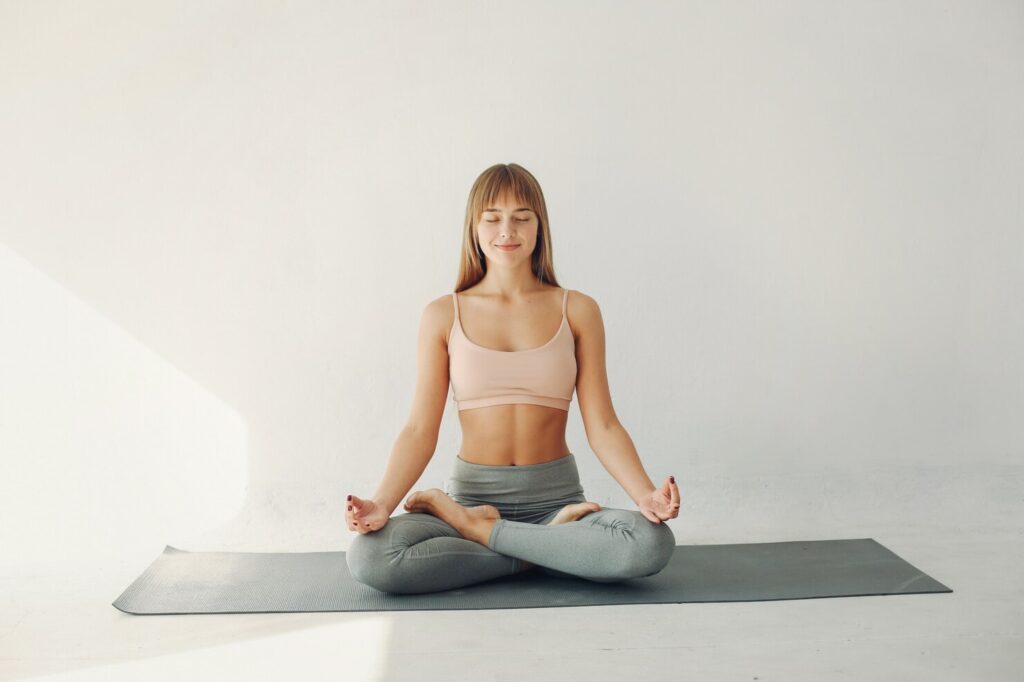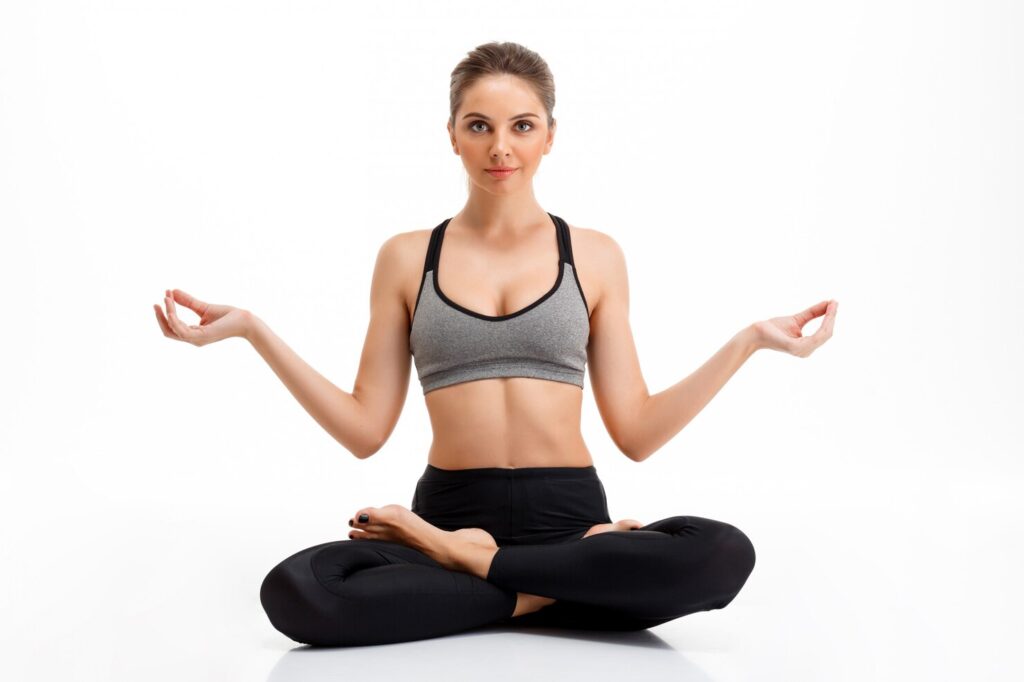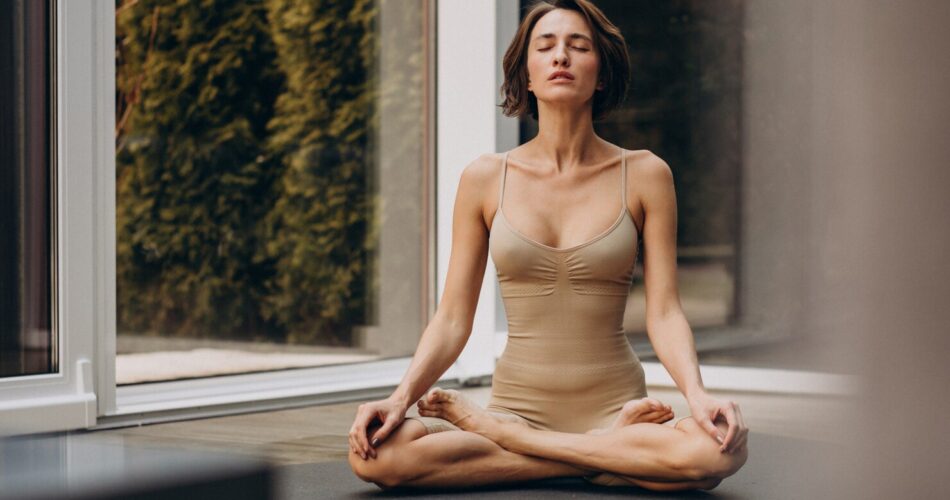Padmasana Pose
The flower pose in hatha yoga is commonly known as the lotus pose. In the original yoga terminology in Sanskrit, this asana is called padmasana. It might not be advisable to include padmasana in the beginner’s routine as by the time of mastering the flower pose, a woman should have well-developed hip joints. Although for some beginners, the lotus pose poses no difficulties, so an individual approach is important here. If the lotus pose does not cause discomfort or pain, it is reasonable to add it to the routine with other asanas that strengthen the pelvic organs and help improve blood circulation in the groin area.

Padmasana: How to assume the pose?
The technique for performing the flower pose in yoga consists of three stages.
• Sit on the mat and, bending your right leg at the knee, pull the foot towards the left thigh. The foot should rest at the base of the thigh with the sole facing upwards and the heel aligned with the navel.
• Position the left leg in a similar manner.
• Complete the entry into the asana by straightening your back, lowering your shoulders, and relaxing your muscles.
The hand position in Padmasana depends on which variation of the lotus pose in yoga is chosen.

Lotus Pose in Yoga: Variations in Practice
As mentioned above, different versions of the lotus pose mainly differ in the positioning of the hands. The simplest version involves hands folded at chest level in the “palm-to-palm” position, with fingers pointing straight up. One of the classic written sources, the fifteenth-century “Hatha Yoga Pradipika,” prescribes holding the hands in a bowl with palms facing up (right hand on top of the left) at the level of the mid-groin. When using the lotus pose for meditation (its primary purpose), the fingers form what are called mudras, special finger combinations. Typically, this is jnana mudra: the tips of the thumb and index finger are joined, while the other fingers are spread apart. However, other variations are also possible.
The more complex version of the lotus pose, baddha padmasana, involves a different hand position: the hands are taken behind the back and crossed. The right hand should grasp the toes of the right foot, and the left hand should do the same with the toes of the left foot. In the dynamic variation of baddha padmasana, you need to lean forward and touch the floor with your forehead.
The lotus pose is considered one of the foundational poses in hatha yoga and is often used in various combinations and variations of other asanas, for example in Kukkutasana or Uttana Kurmasana.

Lotus Asana: Execution Nuances
When adjusting the asana, it’s important to:
• monitor the position of the hips: they should be maximally turned outward, with the muscles completely relaxed; otherwise, it will be impossible to properly assume the pose;
• avoid excessive tension in the knees, which signals an error, as padmasana works with the hip joint;
• keep the sitting bones on the floor;
• the leg should be fully bent at the knee; otherwise, the shin cannot be turned correctly.
Padmasana: Recommendations for Beginners
Beginners should not approach mastering the lotus pose with excessive enthusiasm. There is a set of asanas that will help prepare the muscles and joints for mastering this iconic yoga pose for many. Agni Stambhasana, Upavistha Konasana, Janu Sirsasana are excellent for working on the hip joints. Baddha Konasana is a great preparation – it is beneficial for both preparing the pelvis and developing the knees.
You can also start with the so-called half lotus (ardha padmasana) or siddhasana. These poses are simpler but no less effective.

Flower Pose: Benefits and When to Be Cautious
“Hatha Yoga Pradipika” calls Padmasana the “destroyer of diseases.” It stimulates blood circulation, positively affects general well-being, relieves drowsiness, and fills the body with energy. Pregnant women love Padmasana also because it is a good way to relieve tension from the back muscles. If adopting the pose is challenging for the expectant mother, for example, in the third trimester when leg swelling often hinders, simplified versions of the asana can be used. These are Siddhasana, Swastikasana, Sukhasana.
It is strictly not recommended to practice the flower pose in case of knee or ankle injuries. Caution should be exercised with the lotus pose in the initial stages of learning it: any discomfort in the knees or groin area should be a signal to stop the exercise.


Download the app and get 7 days free use
 eng
eng rus
rus deu
deu spa
spa fra
fra ita
ita por
por srp
srp tur
tur ukr
ukr por
por bos
bos

